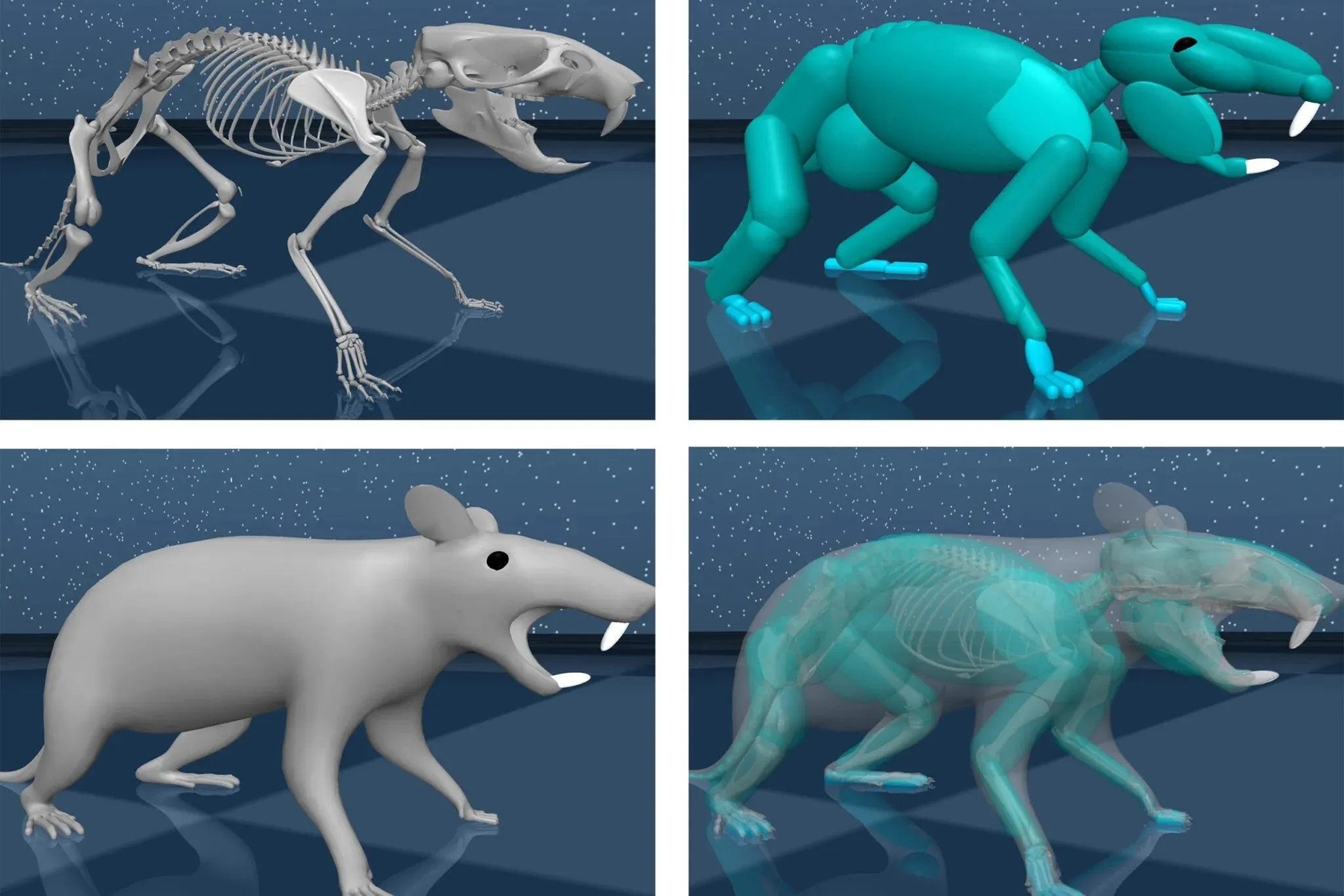A Virtual Rat With an AI Brain Could Mean Better Robots
2024-06-12 23:40:49

7x24 Newsflash
09:56 2025-04-16
A whale increased its holdings of 3079.8 ETH at an average price of $1,559.According to on-chain analyst Ember monitoring, whale nemorino.eth spent 4.802 million USDC to buy 3079.8 ETH an hour and a half ago, with an average price of $1559. Whale nemorino.eth previously believed that ETH would continue to decline in February and March and sold 15,800 ETH (about $38.10 million) at an average price of $2,407.
09:53 2025-04-16
A whale extracted 16,950 BNB from Binance about 19 hours ago.According to Onchain Lens, a whale address withdrew 16,950 BNB (~ $9.90 million) from Binance about 19 hours ago. Of these, 9,550 BNB have been exchanged for $5.53 million in USDC and USDT, with $5.07 million deposited into the Aave V3 protocol. The address still holds 7,200 BNB (~ $4.16 million) and may continue to sell to increase supply on Aave.
09:41 2025-04-16
ChatGPT now has a dedicated AI-generated image libraryOpenAI announced that its ChatGPT has now launched the image library function, gradually opening it to all free, Plus and Pro users. Users can access the "Library" area through the sidebar to view previously generated images in grid form, and there is a "Generate New Image" shortcut button at the bottom for quick creation. The new function enables integrated generation, browsing and management of AI images.
09:38 2025-04-16
Italian Finance Minister warns that U.S. stablecoin policy threatens more than tariffsAccording to Cointelegraph, Italian Finance Minister Giancarlo Giorgetti warned that U.S. stablecoin policies threaten European financial stability more than Trump's tariffs and could weaken the euro's dominance in cross-border transfers. He urged the European Union to strengthen the international role of the euro, stressing the importance of the digital euro.
09:35 2025-04-16
Germany's BaFin orders Ethena to stop issuing USDe tokensGermany's Federal Financial Supervisory Authority (BaFin) has ordered Ethena GmbH to cease its business in connection with the USDe token offering. BaFin found serious deficiencies in Ethena GmbH's operations during the authorization process and imposed sanctions on it, resulting in the revocation of its USDe token offering. The company entered the German market under the transitional provisions of the European Crypto Asset Market Supervisory Authority (MiCAR), but withdrew its authorization app...
08:59 2025-04-16
AR falls below $5The market shows that AR has fallen below $5 and is now quoted at $4.99, a 24-hour decline of 3.48%. The market is volatile, so please do a good job in risk control.
08:59 2025-04-16
Morgan Asset Management: Expect the Federal Reserve to cut interest rates as soon as the end of JulyTai Hui, chief market strategist for Asia Pacific at JPMorgan Asset Management, said it is recommended that the ratio of equity and debt allocation be reduced from 6:4 at the beginning of the year to 5:5, and even more conservative investors should adjust the ratio to 4:6. He suggested that lowering the proportion of US stocks and adding more European stocks would reduce the holdings of non-essential consumer goods and companies with high import correlation. He is optimistic about public stocks,...
08:47 2025-04-16
A wallet that has been dormant for 2 years withdrew 100 BTC from Binance 1 hour ago.According to Lookonchain, a wallet that had been dormant for 2 years withdrew 100 BTC (8.33 million USD) from Binance 1 hour ago.
08:46 2025-04-16
The soaring price of gold caused the recycling customer to temporarily break the contractOn April 16th, spot gold stood at $3,300/ounce for the first time in history, rising by $70 in the day, an increase of more than 2%. Affected by the sharp fluctuations in gold prices, some investors chose to stock up on the rise. Some recyclers reported that some customers had temporarily missed their orders recently. "Today, it suddenly rose by more than a dozen yuan. It turned out that those who were scheduled to be recycled will not be recycled."
08:44 2025-04-16
BTC breaks through $84,000The market shows that BTC has broken through $84,000 and is now quoted at $84019.19, with a 24-hour decline of 2.09%. The market is volatile, so please do a good job in risk control.
08:44 2025-04-16
Oklahoma Senate Committee Votes to Reject Bitcoin Reserve ProposalThe Oklahoma Senate Revenue Committee narrowly rejected House Bill 1203 (also known as the Strategic Bitcoin Reserve Act) by a margin of 6-5. HB1203, introduced by Rep. Cody Maynard in January, allows the Oklahoma Treasury Secretary to invest in bitcoin and other eligible digital assets. An eligible digital asset is defined as any asset that has a market cap of more than $500 billion in the past year. Currently, only bitcoin meets this threshold. Earlier commissioners...
08:38 2025-04-16
WCT briefly breaks through $0.65The market shows that WCT broke through $0.65 in a short time, and is now quoted at $0.6267, with a 24-hour increase of 213.55%. The market fluctuates greatly. Please do a good job in risk control.
Hot News
Vitalik: "DAO" means "project", "official" means "scam"Backpack Exchange已面向英国用户开放其服务派盾:NIBI同名代币发生Rug Pull,损失约31.39万美元香港金管局推出稳定币发行人沙盒CIAN与Lido合作,在Base上推出wstETH Hyper-Staking VaultGate.io 3月储备金总额突破60亿美元,额外储备金超8亿美元Polyhedra Network已于3月12日16时完成ZK空投快照英FCA:不会反对加密资产相关ETN上市请求BTC流通市值突破1.4万亿美元,续创新高Space Nation将于3月底启动OIK代币空投